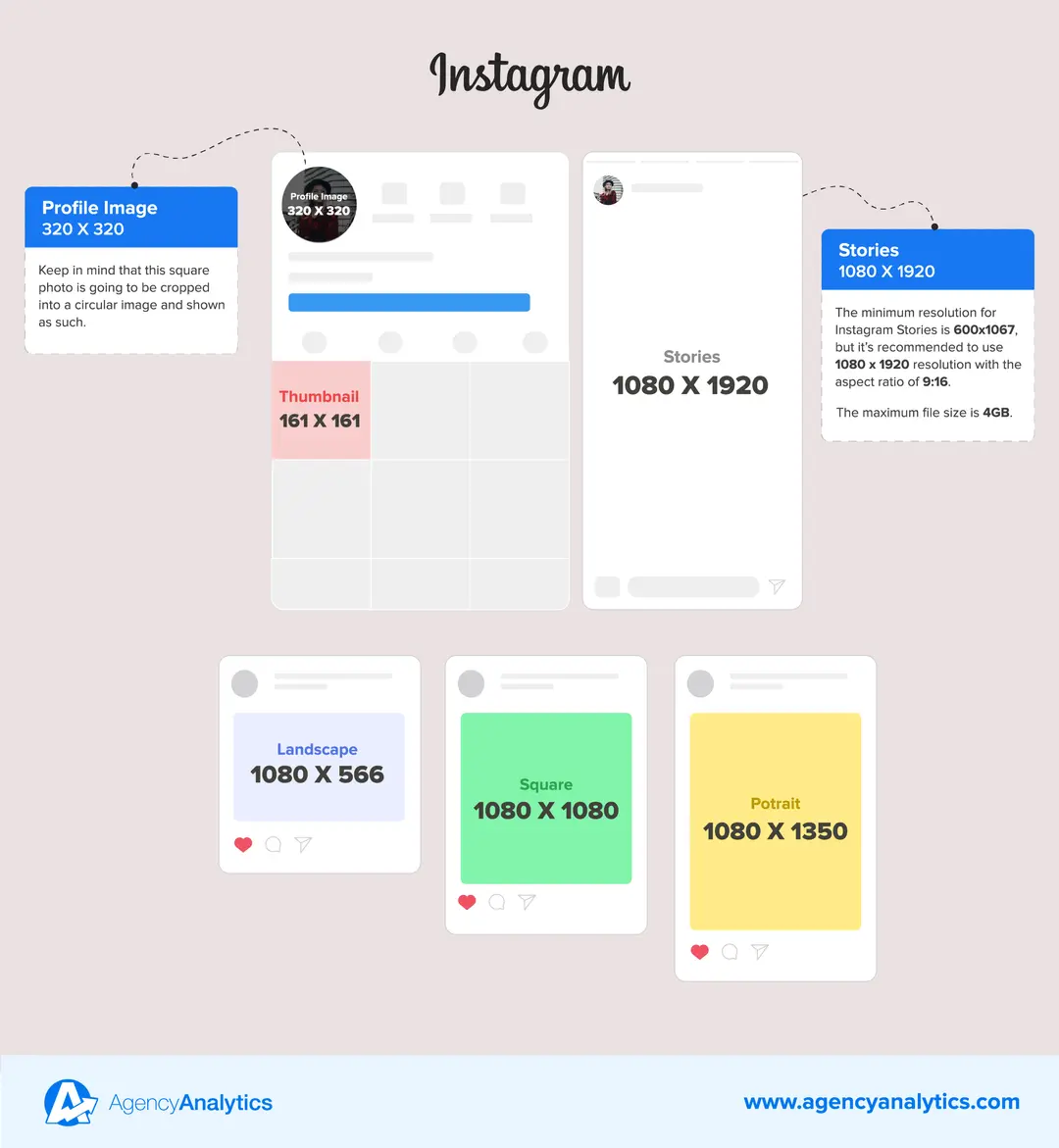How is Social Media Management Done?
How is Social Media Management Done?
Are you actively managing social media right now? Have you recently started working for a digital agency? You can quickly learn about the basics of social media management.
Discover the basics of managing social media for companies and agencies with the help of this excellent resource.
What is Social Media Management?
Social media has become an important aspect of modern marketing and communication. It has enabled businesses of all sizes to connect with their audience and reach potential customers around the world. But managing a social media account, creating content, planning and analyzing the results can be a daunting task.
Social media management can involve multiple channels, ranging from Facebook to YouTube, depending on the company's goals. A company regardless of how many used social network, social media management is an important component of any marketing plan, and can result in a measurable ROI.
Who is the Social Media Manager?
A marketer who creates and plans content, interacts with followers, follows social media trends, and reports on account performance is known as a social media manager. If you want to be successful in managing social media, you need some skills.
- As a social media manager, it is your duty to share the words of both public and private organizations or messages on behalf of a well-known person. For this reason, you should be able to express yourself clearly both verbally and in writing.
- No matter what kind of social media accounts you manage, you need to constantly find creative and interesting ways to transfer information. Social media managers need to be creative and open to trying new strategies.
- You need to learn how to work closely with clients in the social media team, colleagues in the field of design and marketing. If you know how to work with others, you can use social media more effectively.
There are many moving parts in social media management, from content production to data analysis. It is very important to be organized, establish reliable procedures to work effectively and prevent mistakes.
Introduction to Social Media: The Preparatory Stage
It's true that spontaneity can sometimes lead to unexpected results, but you need a plan to get the most out of social media (otherwise you risk wasting time and energy on your marketing efforts).
You can follow these six steps to get started with social media planning.
1.Social media evaluation
If your business already uses social media, start by reviewing your brand's profiles and results.
Here is a simple process that you can use:
Create a list of all the social media handles, display names, and channels belonging to your company. Are the branding, handles and display names the same on all channels? If not, organize them all to eliminate confusion and make it easier to find your company.
Create social media reports so that you can evaluate the performance of each profile. Evaluate engagement rates, account access, and audience growth. Do these social media indicators increase as you post certain types of content on social media, or do they improve over time? Find trends and get to know the best performing content.
Compare your brand's most up-to-date social media performance with previous results, industry standards, or competing brands. Do a SWOT analysis (strengths, weaknesses, opportunities, and threats). Let this analysis guide your social media planning.
2.Set goals
Any social media strategy should start with at least one goal. And this task needs to have specific, achievable, closed-end goals.
If your company has just entered the Sunday, your main goal may be "to make more people aware of us". Turn this broad goal into something more specific, such as "get a certain number of followers" or "create a certain number of brand mentions" for your social media accounts.
If you can't measure your progress, you can't tell if you're succeeding or not. Think about how you can track your engagement, the number of followers you have on social media, and how you can use indicators to measure your progress.
Accessible
You can definitely dream big, but setting an incredibly high standard won't help your brand or reputation. Instead of setting a goal of gaining 10 million new followers for a small account, choose an amount that you can really reach with a good app.
Relevant
If your goal is insignificant in the long run, it can be difficult to feel motivated to work towards it. Direct your efforts and resources to the goals that are most important for the success of your brand.
Time
Every goal requires a deadline. Otherwise, you will work on it indefinitely. Set deadlines for your social media goals so that you can allocate resources and measure progress.
3.Create KPIs
After setting your social media goals, it's quite simple to identify and track the key performance indicators (KPIs) that you need to achieve.
For example, if you want to add 5,000 new followers over the next three months, make sure that your audience expands regularly every month. You can directly access your company's social media profiles to check your follower count, or use social media tools to track account growth on all platforms at the same time.

4.Do an audience analysis
To promote your brand effectively, you need to know your target Sunday.
Use the following strategies to better understand your potential consumers:
Take a survey about your current customers. Ask your customers directly about their experiences with your brand or the problems that your products solve by email, survey, phone call, video conference or even one-on-one meeting.
Check out your current fan base. For information about the age, gender, geography and interests of your brand's followers, look at audience statistics on social media profiles. Check out your various social media profiles to see how your audience is interacting with your brand.
Create receptive personalities. Using the information from your audience research, create one or more buyer personas that represent the ideal customer for your brand.
5.Choosing social media channels
It's simple to think that a successful brand should be available on all social media platforms, but this is not true.
Before you start creating profiles on every network you can think of, find out which channels give the highest value for your brand.
Review the general demographic information to determine which platform often attracts your target customer. Instagram For example, if your ideal customer is between the ages of 18 and 24, you can choose to focus Decently on Snapchat or Instagram. They might like live streaming services like Periscope.
After that, do some basic competitor analysis. Find out which platforms your closest competitors are using and which strategies are giving the best results.
6.Create an editorial program
Before developing an editorial calendar, you need to identify social media platforms and conduct audience research. Create a plan for major campaigns that you need to focus on all year round, such as new product releases and seasonal promotions.
Then, circle the blog entries that you want to promote and the annual events that you can use. Don't forget to mention the opportunities and holidays specific to your industry. A cosmetics brand's social media posts can highlight Fashion Week, as well as prom and wedding seasons.

Do not forget to take into account the psychology of your social media material.
Assign team members to manage the creative and copywriting for each piece, and then plan the material so that it will be published at a time when your audience will find it most interesting.
Social Media Budget
Whether you're considering a few paid ads or a completely organic approach to social media management, your team needs a budget for social media.
If you have a spending strategy for your social media management, you will be able to allocate a budget for everything from social media management tools to partnerships.
Create a social media budget for your company or client using these five steps:
1. The size of your organization and your social media goals
There is no single social media management budget that works well for every organization.
Consider these factors when deciding how much money to spend:
The size of your company. A small company with a single service area will probably spend much less money than a large company with a large number of locations or business divisions.
How big is your team? Marketing strategy, planning, design, content creation, community management, and a company or agency with the department, including various social media Competitive Analysis in comparison with Single-A team of social media needs to finance much less.
The goals of your company. If you intend to gradually achieve your goals through organic growth and interpersonal connections, a lower budget should be enough to meet the needs of your brand. If you want to experience rapid growth driven by a large number of social media marketing efforts, you will need to invest more.

2.Price sources
First, consider the price of the necessary resources.
The following are some of the most typical requirements for social media managers:
Managing social media tools
With Nerasocial, you can manage interaction with the social media management agency, organize creative materials and content.
Brand tracking tools
If you need to follow your brand on social media, review sites and the Internet, you can request an enterprise-level application. With the help of the software, you can track the volume and sensitivity.
Tools for hashtag research
A special tool for tracking brand and hashtag interactions or identifying appropriate hashtags for your content can make your job much easier. Using the applications, you can search for keywords and track their performance over time.
Editors for images and videos
When you have access to a good photo and video editing software, it is much easier to produce fascinating visual materials. The best platforms for creating professional social media content are Canva and Adobe Creative Cloud.
Systems for managing projects
Project management solutions are necessary to manage campaigns and ensure that your team works as a single unit. The applications are perfect for team collaboration and project management.
Team members
You can create more and better content while improving the social media performance of your business or customer with appropriate teammates. By signing up with an expert or employing an expert, you can create more insightful reports, manage sponsored campaigns and complex activities.
Marketing expenses
If you want to expand your company faster or achieve your goals, create a budget for advertising. You may also need software for social media advertising to create and manage paid campaigns.
3.Which content do you need?
A budget is necessary when producing high-quality content, which includes copywriting, setting up photo shoots and shooting movies.
Taking into account the cost of hiring a copywriter to write the captions of the images of your social media posts, calculate the cost of getting the images and videos you want to post.
4.Social assistance campaigns
You'll probably want to collaborate with influencers, publications, or other brands to achieve your social media goals.
Although it is free to make contact, collaborations and promotions will undoubtedly be subject to a fee. You can get price quotes from publications and influencers to estimate the expenses of various potential collaborations.
5.Advertising campaigns
The next step is to calculate the cost of the advertising campaigns that you intend to use for your social media marketing.
You may want to advertise on Facebook, Instagram, LinkedIn, Pinterest, Snapchat, Twitter, YouTube or all social media. Don't forget to also take into account the price of comparable campaigns on websites such as Reddit, Google and Bing.
Developing content for Social Media
You will need a constant stream of material to post when creating and expanding your brand's social media profiles.
Effective social media management requires producing the right kind of material at the appropriate time, from focused campaigns to articles.
You can create the following types of content to achieve your brand's goals:
Writing
Is it better to publish a single word or a complete novel? Every social media post requires a title or well-written material.
Use a two-pronged strategy to write an article that connects with your audience and strengthens your brand:
Think about how your brand is perceived. Think about the tone of voice of your brand and how you can convey it in text, tone and style. Create a style guide to ensure that your employees consistently represent your business in all social media posts.
Think about the preferences of your audience. Check out their comments on your social media posts to get an idea of how your audience really feels. Pay attention to repetitive sentences, tones and, if necessary, incorporate the preferred style of your audience into your writing.
Imagery
Visual materials, which can range from staged product shots to graphics, can convey a lot about your brand.
Work together with your design team to produce photos that are appropriate for your company and create a brand look. Your brand should be extended to the aesthetics of your images and visuals, from color palettes to established styles.
When posting material, review the photos that receive the most attention from your followers. Recreate or replicate as much as possible the visual style that most connects with your audience.
Also, make sure that any content you create for social media channels matches the display specifications.
This useful infographic from Agency Analytics can help.

Video
The influence of video has grown significantly over the past few years and has quickly become an important part of the content strategy.
Consider incorporating some of the most popular video genres into your content strategy:
Post expertly crafted videos for social media marketing.
Use unofficial mobile movies to show your audience what's going on behind the scenes.
Distribute how-to videos to explain complex items.
Live broadcasts
Live video can help your brand build a more intimate relationship with fans, while pre-recorded video can increase access and engagement. Live streaming features are available on all major social media platforms, making it easy to interact with your audience on almost any platform.

Short videos
Longer videos give you more chances to inform viewers, advertise products, or show viewers a task. However, each of your movies doesn't have to be longer than one minute. Using music, filters and text overlays, you can create content on many social media platforms using short-form video alternatives.
Reels and other short-form videos work well to grow your audience and increase engagement. Reels not only appear in the feed, but also have their own tabs in the main Instagram menu and on your brand's profile.

Temporary content
Some of your social media posts may be more useful. However, if your video is deleted after 24 hours, it naturally becomes more unique and can convince viewers to watch it immediately.
Also, in the management of Facebook and Instagram, stories contain interactive components, unlike other forms of entertainment. Both types of stories allow you to tag things, add URLs, ask questions and conduct surveys using interactive stickers and touchable links.
Downloadable content
A few social media networks, such as Facebook and Instagram, include built-in shopping features for e-commerce businesses. Customers can tap on your brand's purchasable product labels to visit your website or complete their purchase directly on the social media app.
Links
A great approach to encourage customers to interact with your brand outside of Facebook, Twitter and other platforms is to post links on social media.
Adding a link can do the following:
Increase the number of readers of your latest blog post.
Ask them to download a white paper, manual, or checklist.
Convince customers to visit your online store.
Increase memberships, free trials or product promotions.
Selected content
Your brand should not be the main highlight of every post you write.
By choosing the appropriate content for your audience, you can add some depth to your editorial calendar and amplify the voice of your brand.
Source blog posts, videos, infographics, and other materials from other companies or thought leaders in your industry to create the perfect kind of content for your fans.
Curating content for your audience is simple on some platforms, including LinkedIn. After opening your Business Page, click the content tab. Next, choose the function and seniority of your audience or industry. LinkedIn will recommend popular items to your audience on its own.
When you share selected materials, indicate your brand's point of view in the title to continue the dialogue.
User-generated material
Did you know that you don't have to produce the materials of your brand?
You can also request frequent participation from your audience. Publishing user-generated materials can help you save money and present your business in a new way, but this strategy can do much more.
Also, user-generated materials can captivate your audience and make your customers even bigger followers.
Asking your audience to mention your brand when they post about your products will help you collect user-generated content.
Social Media Partnership
One of the best ways to achieve your social media management goals is to collaborate with other brands, publishers and influencers.
Collaborations on social media can help you advertise your business in innovative ways, while at the same time helping you achieve great results for less money than traditional advertising.
Effective social media partnerships can provide advantages such as:
Increased brand awareness
Collaborations offer the opportunity to interact with potentially hundreds of thousands or even millions of social media followers.
Community expansion
Do not let this first impression be the end of your interactions. Instead, make the most of these collaboration opportunities so that you can continue to connect with these potential customers and gain new followers.
Increase in sales
If you are promoting a new product or announcing a promotion, working with an influencer or publisher can increase your sales. Use the accesses to increase awareness and sales in your target Sunday.
Also, collaboration on social media does not need to follow a predefined structure. Some of the best techniques are:
Influencer collaborations
Search for social media influencers who are suitable for your brand and have similar audiences.
Then, collaborate with them to submit products for review or produce original content.
Sponsored advertising
Work with publishers in your Apr to spread the news about your business. Using sponsored social media posts to expand your audience and promote your brand can be a smart move.
Gifts
If your brands have similar values or target audiences, consider collaborating on a gift with another brand in the same industry.
Both of you can increase brand awareness and attract new followers by promoting the gift to your audience.

Participation and listening in social media
If the social media content you create connects with your followers, you can expect the participation of your target audience. Managing engagement can take a lot of hard work, from likes to comments, shares to direct messages (dms).
Create a workflow that you and your team can stay connected to to respond to engagement and successfully monitor your brand.
For example, you can review and reply to comments and direct messages (dms) hourly or at December intervals throughout the day.
Several ways to speed up the procedure:
Create saved answers that you can use to answer frequently asked questions or descriptions.
Assign the correct team members to specific questions.
Automate the monitoring or deletion of spammy interactions.
If you want to find out what people are saying about your company on other social media platforms, make sure listening to social media is a regular part of your routine.
With a social listening service, you can find tabs related to the competitive event, as well as brand references and campaign hashtags.
Organize social listening calls for your company, campaigns, products, industry and more.
Analyze consumer sentiment and decide whether it is rising or falling.
Discover and participate in important conversations about the brand.
Identify crises and deal with them before they get out of control.
Find potential customers, loyal customers, influencers and increase their number.
Track the strategy and activities of competitors.
Social Media Reporting
Whether you are dealing with the accounts of a single company or the accounts of several customers, social media reporting takes a long time.
Note the most important up and down trends when reviewing your social media data. Check out what was happening on those days, such as the articles you wrote or the influencer alliances you explained. Finally, based on your insights, decide what is most effective for your audience and implement as much of it as possible.
Then select the data fields and social accounts that you want to include in the report. Before you start creating the report, you can send it to yourself, your team, or your customers once a week or once a month. Automatic reporting is essential when time management is a priority.

The Use of Social Media by Agencies
Use the following strategies to maximize the social media management services provided by your company:
Keep an asset library up to date.
Whether you oversee a small number of clients or multiple clients for your social media firm, you probably struggle to keep content organized at times. The process can be even more challenging, especially when you collaborate with others.
To solve this problem, a resource library that is already built into your social media dashboard can help.
Using an asset library, you can organize content for campaigns or social profiles in different client folders and subfolders.
Since everyone on your team has access to the asset library, you can be sure that a teammate will discover the appropriate ads to share. Your whole team can cooperate seamlessly.
Not sure if a photo of you has been published before? By consulting the asset history, you can find out how and when your team changed or used each image and video.
Master planning tools
When you make the right planning tool investment, you can inform your team and customers about what to publish.
Planning tools also include useful tools such as:
The ability to publish posts in bulk to schedule them quickly
The ability to reschedule for frequent sharing
Hashtag databases for quick access to campaign or brand tags
Create a procedure for approval
You need a social media approval procedure before writing and posting materials for clients.
An effective approval procedure allows customers and colleagues to review and sign articles, ads, and campaigns, while reducing the likelihood of posting false or harmful content.
Instead of using email or chat apps to approve each social media post individually, use your social media planning tool to incorporate the approval process. Simply prepare the article, then assign it to your client, marketing manager, or other stakeholders. The scheduling procedure is completed after approval by the appropriate person.
Create a uniform pricing system.
Create a uniform pricing structure that makes sense for your agency to save yourself time and hassle.
Monthly social media management packages are widely available from agencies.Jul.
There may be some pricing variables...
Social channels: How many social media channels do you manage for each client? You may want to add a fixed monthly fee for each network.
Social media posts: How many are posted each week? Consider increasing the cost of extra weekly or monthly shipments.
Design and content production: Do you develop your own design and content internally or do you rely on customers to provide them? Be sure to take into account the price of creating original creative visuals.
Advertising budget: Does your company manage paid campaigns in addition to managing organic social media? Including the cost of paid social media and advertising.
As a result,
Now that you understand the basics of managing social media, you can start working. To effectively grow your brand, set your social media goals, plan a content calendar, create branded content, and start building relationships with potential partners.
If you want to manage your social media accounts more efficiently, contact us immediately! Choose Nerasocial to plan, monitor and evaluate all your social media initiatives.
Other Related Blogs
Do you want to learn about what your brand lacks in marketing?
See what can you improve with our free marketing analysis and find out what actions you should take.
Get Your Free Marketing ReportBe informed about the innovations of the marketing and social media world!
Would you like to subscribe to our e-mail newsletter to learn about sectoral developments, marketing ideas and social media innovations regularly every month? Don't forget to check your newsletter membership for ideas that will add value to your brand!








